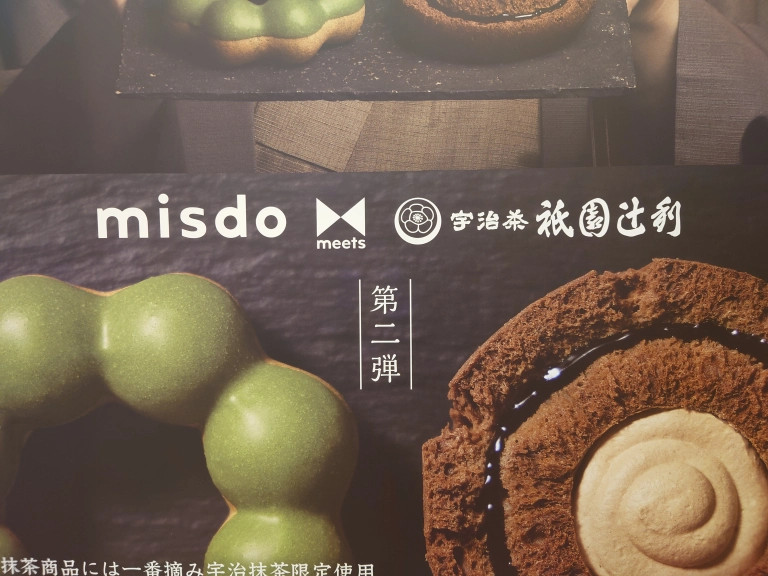
Five new types of donuts with matcha and hojicha flavors? Count us in!
Mister Donut, or “Misdo” as it’s colloquially known in Japan, is currently doing great things with Kyoto-based Japanese confectionary maker Gion Tsujiri. They had only just released the first round of Misdo meets Gion Tsujiri donuts last month, and now are already moving on to a whole new set of matcha and hojicha-flavored donuts.
Like the first round, the second round, which just came out on April 27, features the flavours of Uji Matcha, or green tea, and Uji Hojicha, or roasted green tea, this time in different donut forms. There are altogether five donuts in Round 2 of the Misdo meets Gion Tsujiri collaboration. Three of them are matcha-flavored Pon de Ring donuts, which is Mister Donut’s original recipe of chewy donut holes attached together in a ring. The other two are “old-fashioned” donuts flavored with hojicha. You can buy each one individually or together in the “Gion Tsujiri Eat and Compare Set” (1,003 yen [US$7.65]), which comes with an original paper shopping bag (while supplies last).
The marketing of this second round asks its customers, “Matcha Pon de Ring or Hojicha Old Fashioned: which one’s for you?” There’s no way we could give an honest answer without tasting them all, so our taste-tester, Japanese-language reporter Tasuku Egawa, went to Mister Donut on the release day to try them out. Though it had only been the first day of the donuts’ release, the paper shopping bags were already sold out. Nevertheless, all five donuts were still available, so he snatched one of each and brought them home for a diligent taste test.
First up was the Pon de Ring Double Uji Matcha donut (170 yen).
This one had one side coated in matcha chocolate.
Breaking the donut apart revealed an interior of vibrant green, so the dough was clearly infused with matcha before baking. True to its name, it had a double punch of matcha.
The donut as a whole was sweet, but the dough had the bitterness of true matcha infused into it. It was strong enough to surprise Tasuku and was a pleasant contrast from the usual matcha-flavored sweets, which are generally more sugar than matcha. It’s precisely because it’s a very simple recipe that you can really get a feel for the quality of the ingredients. This was a good start to Tasuku’s taste test.
Next, Tasuku tried the Pon de Ring Uji Matcha Azuki donut (190 yen). This donut, dusted with brown sugar, looked really good, and Tasuku’s first impression of it was that it was heavy.
Not heavy in flavor, but heavy in weight. It had a significant heft to it that surprised him. He might even say it was the heaviest Pon de Ring donut he’d ever held.
That’s because it was a sandwich-style Pon de Ring with a filling of red beans and matcha whipped cream. Combined with the Japanese brown sugar and the matcha-infused dough, this donut was a smorgasbord of Japanese flavors. What’s more, the dough was beautifully moist, possibly owing to the water content of the red beans and the whipped cream. This one was really good!
The last of the matcha Pon de Ring donuts was the Pon de Ring Uji Matcha Warabimochi donut (190 yen). In this one, Tasuku experienced a novel deliciousness.
This one was just as heavy as the Azuki donut. This is likely also due to the fact that it was a sandwich-type, and Tasuku was excited to see what was inside.
It might be hard to tell from the picture because it’s translucent, but underneath the matcha whipped cream was a filling of warabimochi, a jelly-type dessert. It looked mouthwateringly good.
Combined with the doughy texture of the donut, the warabimochi and its slipperiness lent the whole donut a very jiggly texture, and all the toppings combined added a nice moisture to the donut. It was the first time Tasuku had ever tried a Pon de Ring like that. The donut was also light on sugar, which was supplied by the simple sweetness of the warabimochi. The combination of matcha-flavored dough and warabimochi was extremely flavorful. For Tasuku, out of not only the three matcha donuts, but all five of the donuts, this was his favorite.
That’s not to say that the hojicha-flavor old-fashioned donuts were not good, however. Tasuku also liked the Old-Fashioned Uji Hojicha donut (180 yen).
It may be hard to tell from the photo, but this donut had a different color from a regular Old-Fashioned donut. Perhaps because of the hojicha mixed into the dough, it was a nice ochre brown color instead of the usual light brown.
One side was soaked with a hojicha glaze, giving it a nice moistness. Even without eating it, Tasuku could smell the hojicha in it.
As such, he expected it to just about taste like a cup of hojicha tea, but in actual fact, it had a strong sweetness to it. Tasuku didn’t object to that; that sweetness combined with the fragrant taste of hojicha made for a surprisingly good pair.
Lastly, Tasuku tried the Old-Fashioned Uji Hojicha Whip donut (200 yen). This one looked like it was going to be the most luxurious of all the donuts. It even came in its own special box!
The donut inside was topped with some kind of syrup, and had some kind of creamy substance in the middle. This turned out to be a hojicha-flavored whipped cream.
I bet you’re wondering how you’re supposed to eat a donut whose hole has been stuffed with whipped cream without making a huge mess. Worry not: the bottom of the donut was lined with hardened chocolate, providing a barrier for keeping the whipped cream in place.
A quick taste test determined the syrup drizzled in the center of the donut’s dough was hojicha syrup.
And that’s not even all. Hiding underneath the hojicha whipped cream was a filling of warabimochi!
Tasuku took it all apart for the purposes of this article, but he doesn’t recommend doing that if you try this donut. The warabimochi is slippery, which makes it easy for it to fall off the chocolate slab. Tasuku accidentally dropped it when trying to reassemble the donut, which resulted in a bit of a catastrophe.
In any case, the intricacy of this donut and the lengths to which its inventors went to put it together were really interesting. Upon tasting it, Tasuku was just about punched in the face with its sweetness. It was much sweeter than he’d anticipated, but he supposed that was just the way of the Old-Fashioned donut. That sweetness was augmented by the chocolate and the whipped cream, making it a sugar overload. Out of the five, Tasuku would say that this one was by far the sweetest.
Sadly, Tasuku would have to say that the mild flavor of the warabimochi and the taste of the hojicha syrup were quite overwhelmed by the other elements of this donut. However, the warabimochi did retain its unique, jelly-like texture, which came through nicely in each bite. It was still an undeniably delicious donut, and the many elements in it made it exciting, but Tasuku would have to say that the balance of flavors was just not quite there for this one.
So, in answer to Mister Donut’s question, “Which donut is for you?” Tasuku would have to say he’s throwing his hat in the matcha Pon de Ring camp, especially since that warabimochi one was just so good. However, it was a close margin. If you’re aiming for sweetness, the hojicha Old-Fashioned donuts have the edge. Which one is for you? You’ll just have to try them to find out. They’re expected to be around until the end of May, so hurry over to your neighborhood Mister Donut and give them a try before it’s too late!
And if you’re looking for more Japanese sweets-inspired collabs with Gion Tsujiri, be sure to check out McDonald’s Japan’s latest selection of desserts, too!
Images © SoraNews24
● Want to hear about SoraNews24’s latest articles as soon as they’re published? Follow us on Facebook and Twitter!
[ Read in Japanese ]

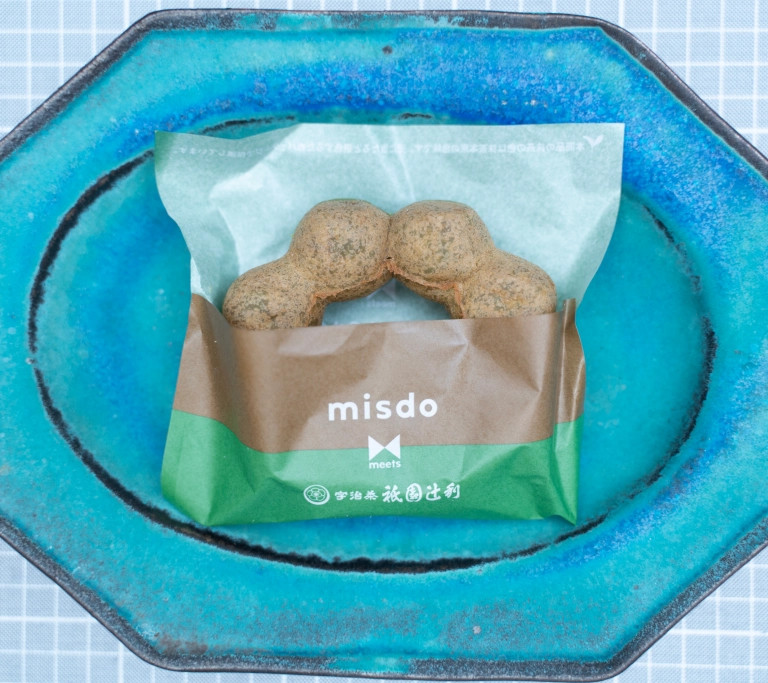
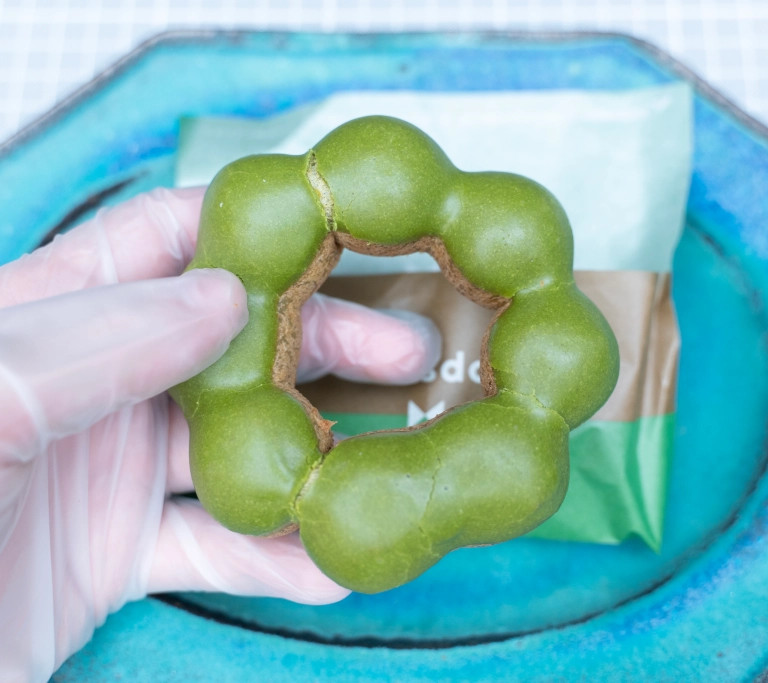
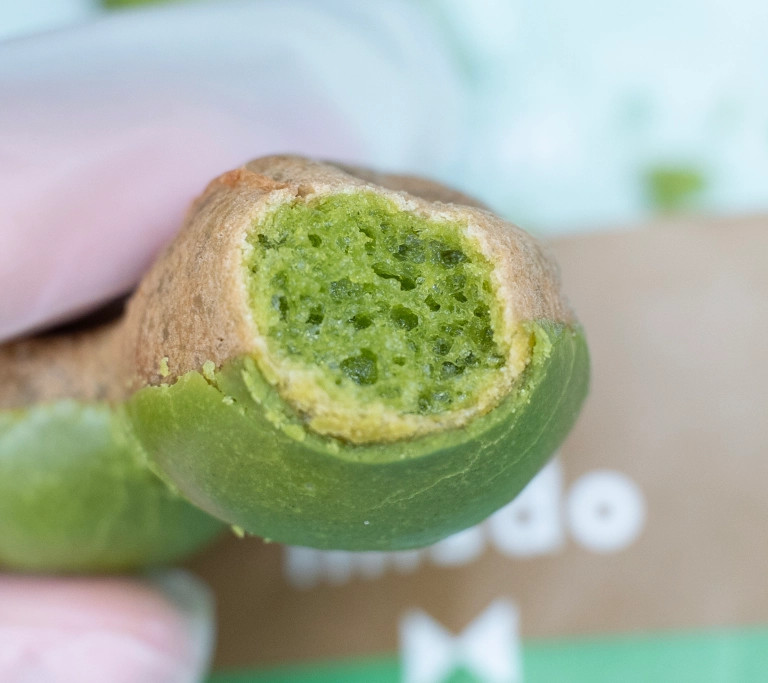
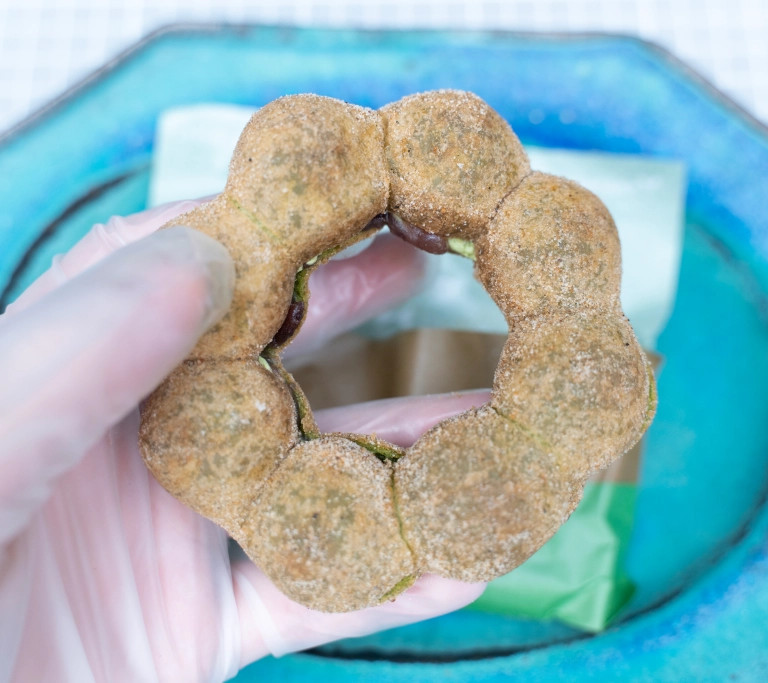
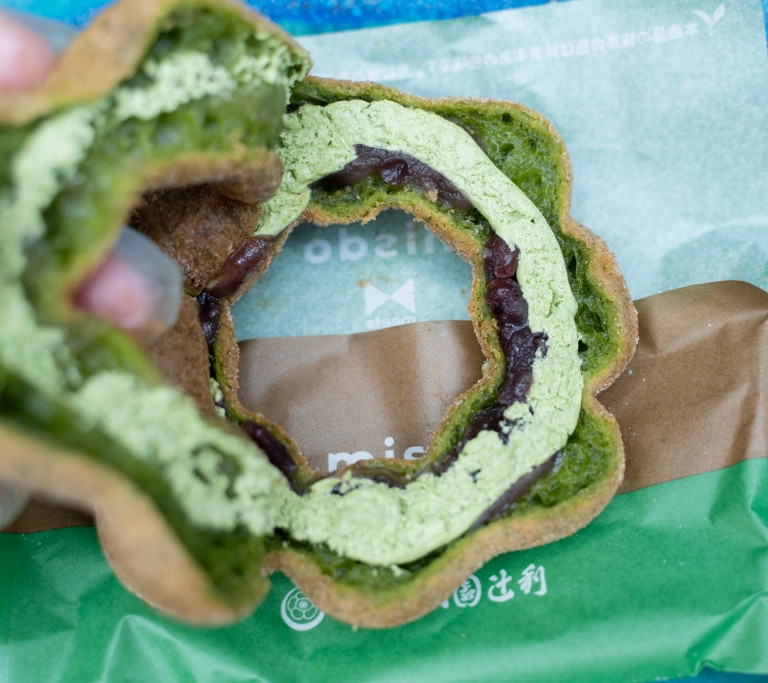
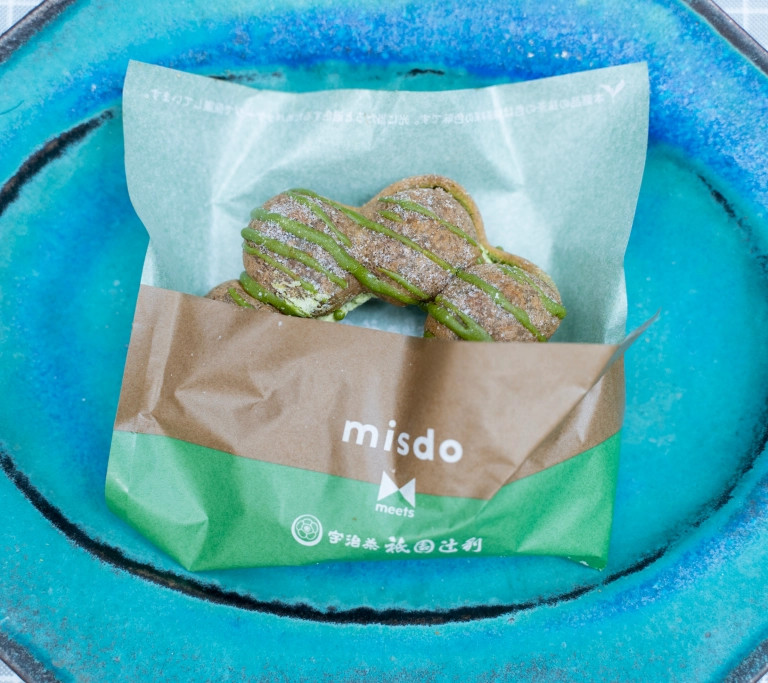
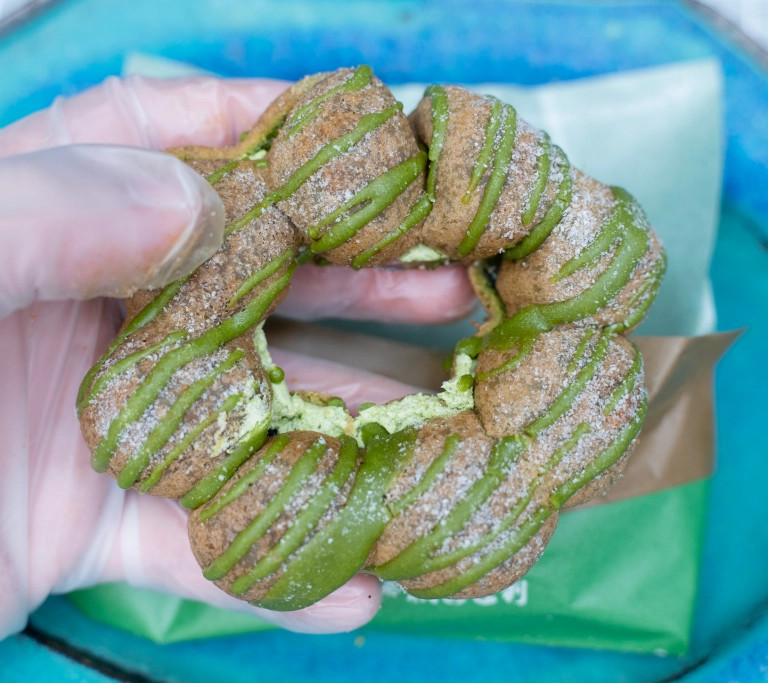
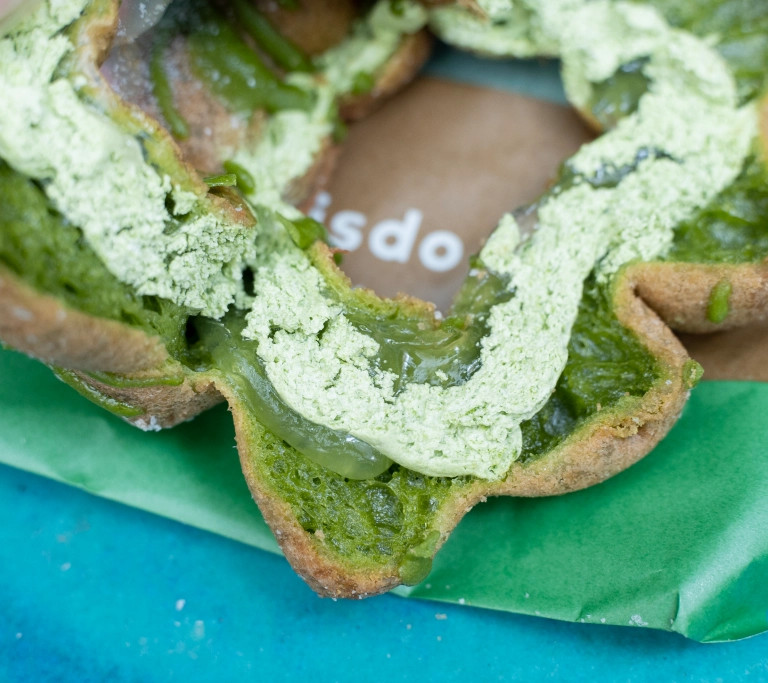
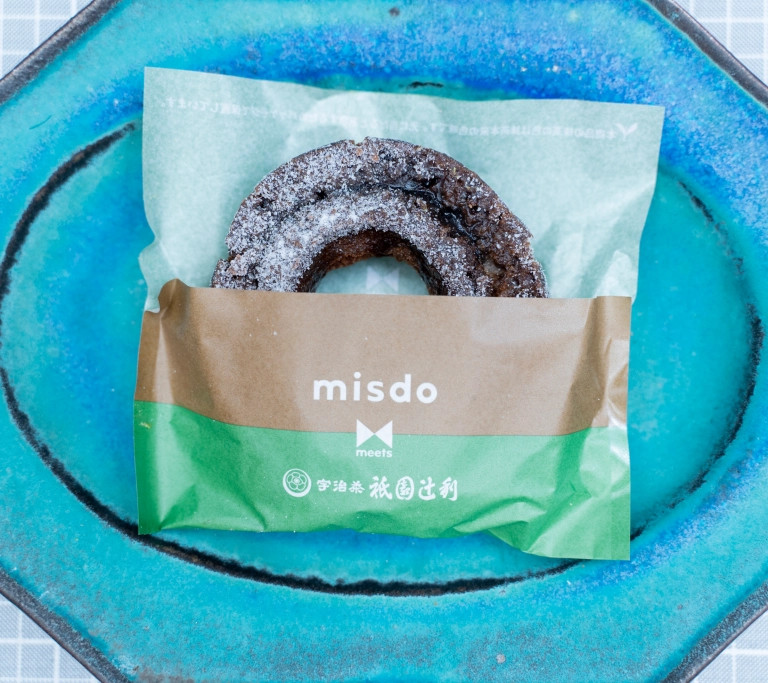
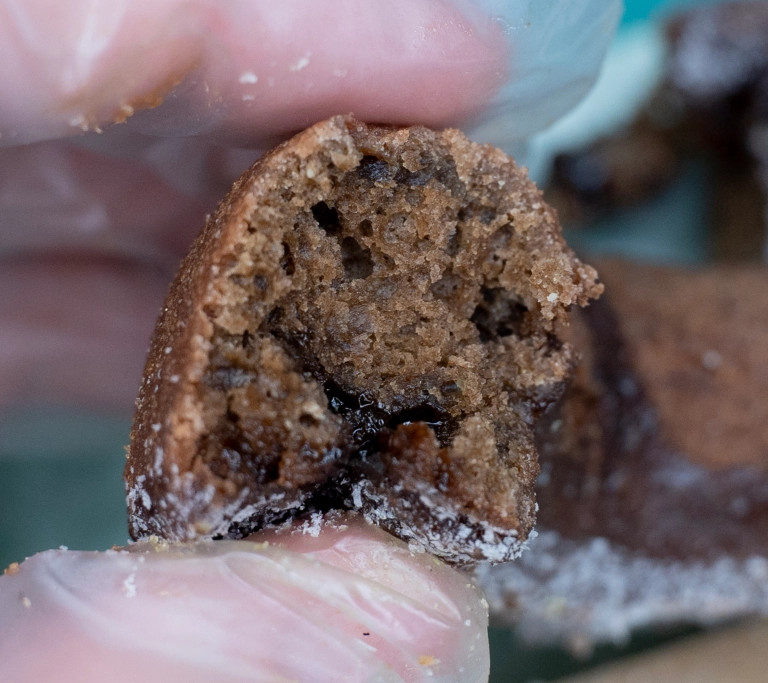
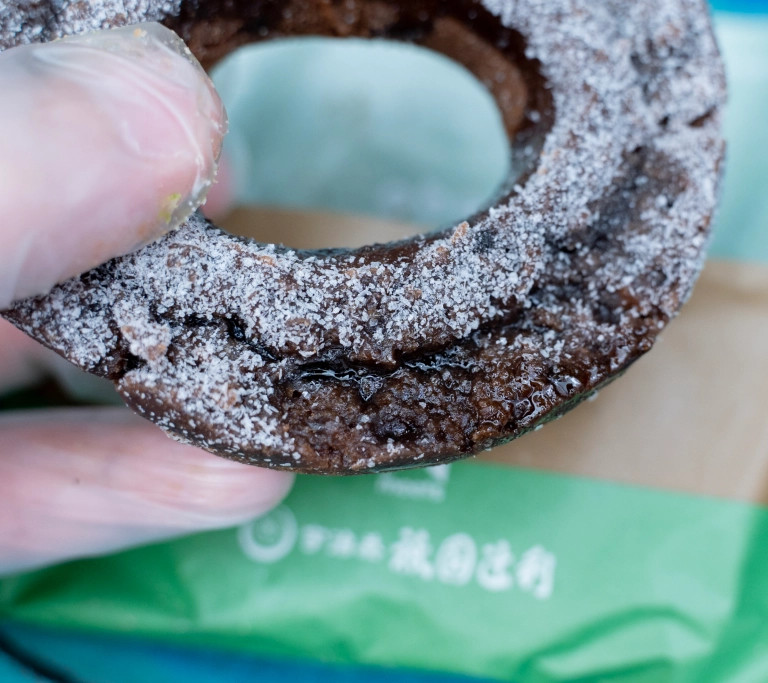


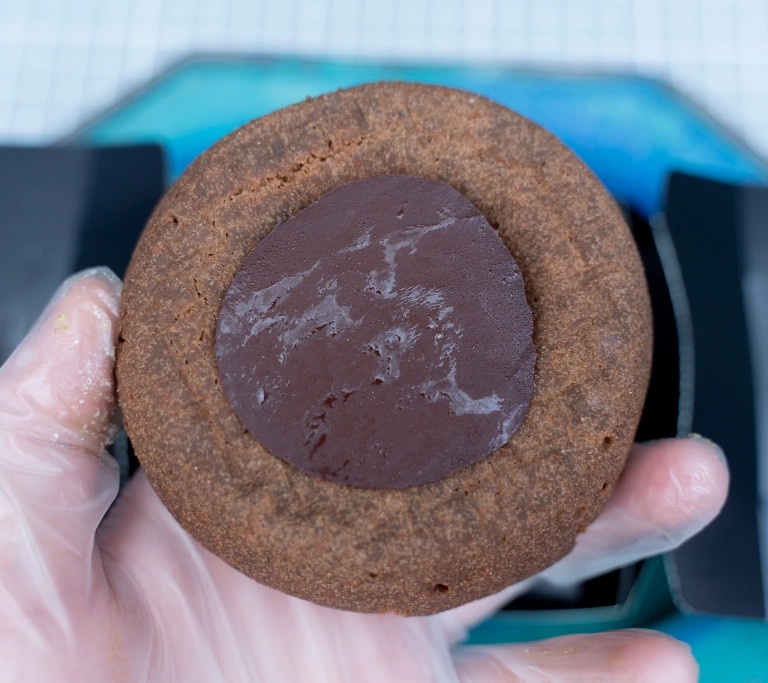
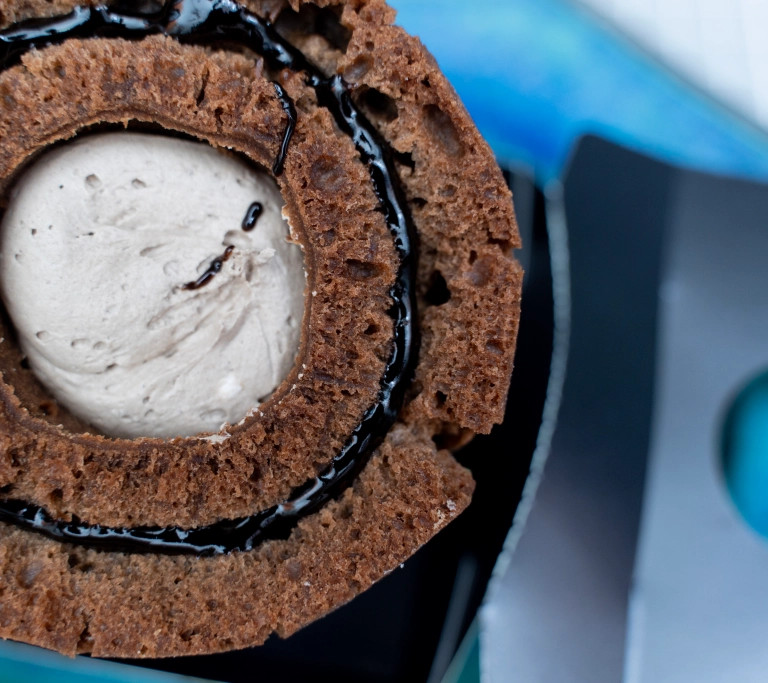
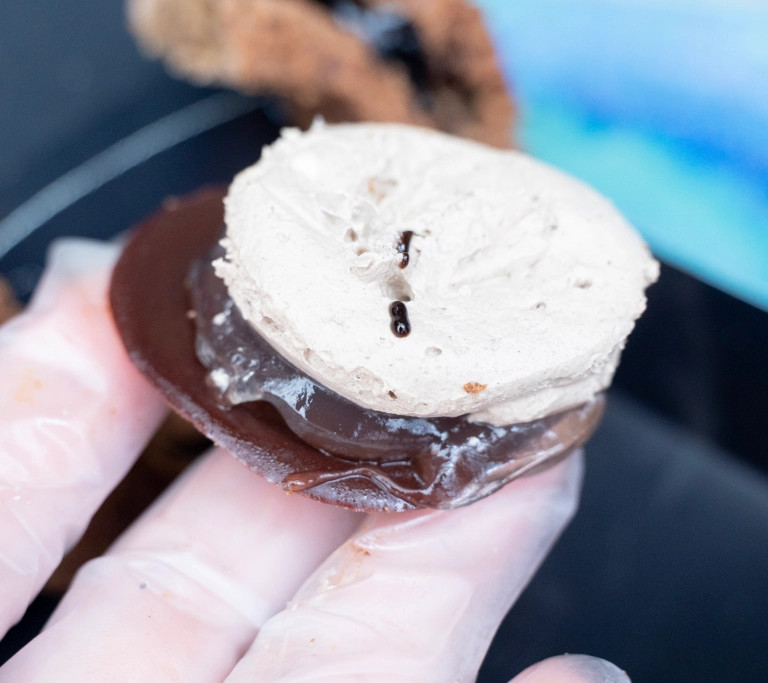
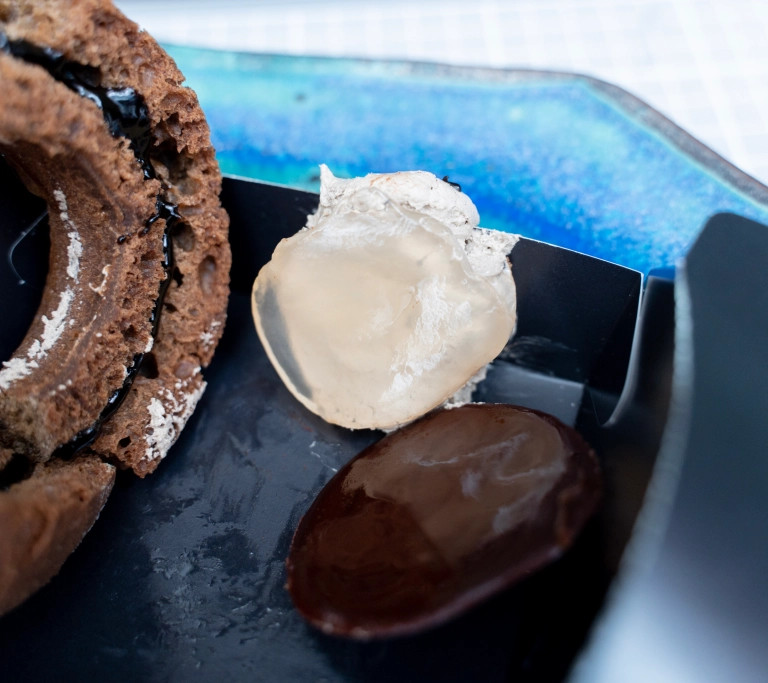
 Mister Donut, Kyoto tea merchant create new line of treats, with one that’s two desserts in one
Mister Donut, Kyoto tea merchant create new line of treats, with one that’s two desserts in one How do the new Mister Donut x Kyoto matcha masters Tsujiri donuts taste? We find out【Taste test】
How do the new Mister Donut x Kyoto matcha masters Tsujiri donuts taste? We find out【Taste test】 We try the four new offerings in the Mister Donut x Gion Tsujiri collaboration series【Taste test】
We try the four new offerings in the Mister Donut x Gion Tsujiri collaboration series【Taste test】 “Glossy green tea donuts” sound weird, look amazing in Mr. Donut team-up with Kyoto matcha master
“Glossy green tea donuts” sound weird, look amazing in Mr. Donut team-up with Kyoto matcha master Mister Donut releases most intense matcha doughnut ever, in conjunction with Kyoto tea specialist
Mister Donut releases most intense matcha doughnut ever, in conjunction with Kyoto tea specialist Foreigner’s request for help in Tokyo makes us sad for the state of society
Foreigner’s request for help in Tokyo makes us sad for the state of society Japanese city loses residents’ personal data, which was on paper being transported on a windy day
Japanese city loses residents’ personal data, which was on paper being transported on a windy day Akihabara pop-up shop sells goods made by Japanese prison inmates
Akihabara pop-up shop sells goods made by Japanese prison inmates Harajuku Station’s beautiful old wooden building is set to return, with a new complex around it
Harajuku Station’s beautiful old wooden building is set to return, with a new complex around it Historical figures get manga makeovers from artists of Spy x Family, My Hero Academia and more
Historical figures get manga makeovers from artists of Spy x Family, My Hero Academia and more Sandwiches fit for a sumo served up in Osaka【Taste Test】
Sandwiches fit for a sumo served up in Osaka【Taste Test】 Ghibli Park now selling “Grilled Frogs” from food cart in Valley of Witches
Ghibli Park now selling “Grilled Frogs” from food cart in Valley of Witches Red light district sushi restaurant in Tokyo shows us just how wrong we were about it
Red light district sushi restaurant in Tokyo shows us just how wrong we were about it Beautiful Ghibli sealing wax kits let you create accessories and elegant letter decorations【Pics】
Beautiful Ghibli sealing wax kits let you create accessories and elegant letter decorations【Pics】 What did Mark Zuckerberg eat at McDonald’s in Japan, and is it as great as he says it is?
What did Mark Zuckerberg eat at McDonald’s in Japan, and is it as great as he says it is? McDonald’s new Happy Meals offer up cute and practical Sanrio lifestyle goods
McDonald’s new Happy Meals offer up cute and practical Sanrio lifestyle goods Japanese ramen restaurants under pressure from new yen banknotes
Japanese ramen restaurants under pressure from new yen banknotes French Fries Bread in Tokyo’s Shibuya becomes a hit on social media
French Fries Bread in Tokyo’s Shibuya becomes a hit on social media Studio Ghibli releases new action figures featuring Nausicaä of the Valley of the Wind characters
Studio Ghibli releases new action figures featuring Nausicaä of the Valley of the Wind characters New private rooms on Tokaido Shinkansen change the way we travel from Tokyo to Kyoto
New private rooms on Tokaido Shinkansen change the way we travel from Tokyo to Kyoto Tokyo Tsukiji fish market site to be redeveloped with 50,000-seat stadium, hotel, shopping center
Tokyo Tsukiji fish market site to be redeveloped with 50,000-seat stadium, hotel, shopping center All-you-can-drink Starbucks and amazing views part of Tokyo’s new 170 meter-high sky lounge
All-you-can-drink Starbucks and amazing views part of Tokyo’s new 170 meter-high sky lounge Studio Ghibli releases Kiki’s Delivery Service chocolate cake pouches in Japan
Studio Ghibli releases Kiki’s Delivery Service chocolate cake pouches in Japan New definition of “Japanese whiskey” goes into effect to prevent fakes from fooling overseas buyers
New definition of “Japanese whiskey” goes into effect to prevent fakes from fooling overseas buyers Our Japanese reporter visits Costco in the U.S., finds super American and very Japanese things
Our Japanese reporter visits Costco in the U.S., finds super American and very Japanese things Studio Ghibli unveils Mother’s Day gift set that captures the love in My Neighbour Totoro
Studio Ghibli unveils Mother’s Day gift set that captures the love in My Neighbour Totoro More foreign tourists than ever before in history visited Japan last month
More foreign tourists than ever before in history visited Japan last month New Pokémon cakes let you eat your way through Pikachu and all the Eevee evolutions
New Pokémon cakes let you eat your way through Pikachu and all the Eevee evolutions Sales of Japan’s most convenient train ticket/shopping payment cards suspended indefinitely
Sales of Japan’s most convenient train ticket/shopping payment cards suspended indefinitely Sold-out Studio Ghibli desktop humidifiers are back so Totoro can help you through the dry season
Sold-out Studio Ghibli desktop humidifiers are back so Totoro can help you through the dry season Japanese government to make first change to romanization spelling rules since the 1950s
Japanese government to make first change to romanization spelling rules since the 1950s Ghibli founders Toshio Suzuki and Hayao Miyazaki contribute to Japanese whisky Totoro label design
Ghibli founders Toshio Suzuki and Hayao Miyazaki contribute to Japanese whisky Totoro label design Doraemon found buried at sea as scene from 1993 anime becomes real life【Photos】
Doraemon found buried at sea as scene from 1993 anime becomes real life【Photos】 Tokyo’s most famous Starbucks is closed
Tokyo’s most famous Starbucks is closed One Piece characters’ nationalities revealed, but fans have mixed opinions
One Piece characters’ nationalities revealed, but fans have mixed opinions We asked a Uniqlo employee what four things we should buy and their suggestions didn’t disappoint
We asked a Uniqlo employee what four things we should buy and their suggestions didn’t disappoint Princesses, fruits, and blacksmiths: Study reveals the 30 most unusual family names in Japan
Princesses, fruits, and blacksmiths: Study reveals the 30 most unusual family names in Japan Mister Donut’s strongest-ever matcha doughnuts are so intense they’ll bind with your DNA
Mister Donut’s strongest-ever matcha doughnuts are so intense they’ll bind with your DNA Mister Donut Glossy Green Tea shows true beauty is on the inside, even for desserts【Taste test】
Mister Donut Glossy Green Tea shows true beauty is on the inside, even for desserts【Taste test】 Mister Donut releases new matcha doughnuts with Kyoto green tea specialists Gion Tsujiri
Mister Donut releases new matcha doughnuts with Kyoto green tea specialists Gion Tsujiri Mister Donut’s new green tea doughnuts serve up matcha and hojicha from a Kyoto specialist
Mister Donut’s new green tea doughnuts serve up matcha and hojicha from a Kyoto specialist Mister Donut teams up with Kyoto tea specialist for new premium matcha doughnut range
Mister Donut teams up with Kyoto tea specialist for new premium matcha doughnut range Master Japanese patissier reimagines the doughnut for new Mister Donut matcha series 【Taste test】
Master Japanese patissier reimagines the doughnut for new Mister Donut matcha series 【Taste test】 We tried every single flavor of Mister Donut’s Belgian chocolatier collab donuts【Taste test】
We tried every single flavor of Mister Donut’s Belgian chocolatier collab donuts【Taste test】 Mister Donut teams up with master patissier for second round of luxurious, limited-edition donuts
Mister Donut teams up with master patissier for second round of luxurious, limited-edition donuts Are Mister Donut’s new sakura and matcha doughnuts all they’ve been hyped up to be?
Are Mister Donut’s new sakura and matcha doughnuts all they’ve been hyped up to be? Three things you should eat at Mister Donut right now, according to staff who work there
Three things you should eat at Mister Donut right now, according to staff who work there Japan’s new Pikachu Pokémon donuts are super popular, crazy cute, and totally tasty
Japan’s new Pikachu Pokémon donuts are super popular, crazy cute, and totally tasty Get your sugar fix with a giant Pon de Ring doughnut from Mister Donut this Holiday Season!
Get your sugar fix with a giant Pon de Ring doughnut from Mister Donut this Holiday Season! Taste test battle! The new Mister Donut ice cream bar vs. a frozen Mister Donut donut【Taste test】
Taste test battle! The new Mister Donut ice cream bar vs. a frozen Mister Donut donut【Taste test】 Mister Donut Japan unrolls a new line of sweet and savory breakfast “bread” donuts
Mister Donut Japan unrolls a new line of sweet and savory breakfast “bread” donuts Japan’s new Pokémon donuts are here, so let’s eat Pikachu, Chansey, and some Poké Balls【Photos】
Japan’s new Pokémon donuts are here, so let’s eat Pikachu, Chansey, and some Poké Balls【Photos】
Leave a Reply